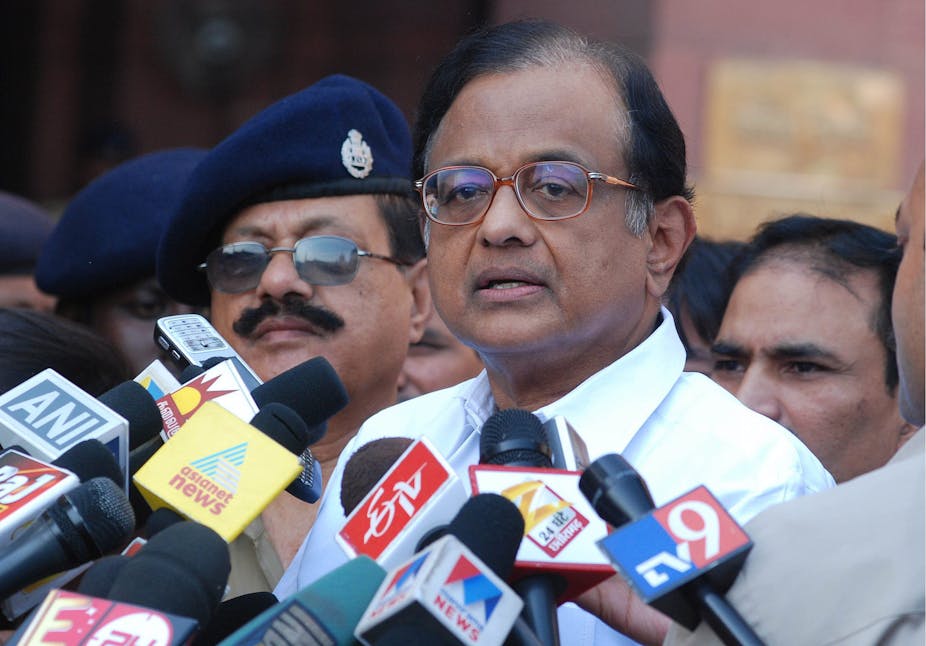The Indian economy is in trouble.
The anticipated tapering of the US Federal Reserve’s aggressively expansionary quantitative easing program has seen a drying up of capital inflow into a country with a trade deficit worth US$200 billion and whose current account deficit of 4.5% of GDP needs a strong capital inflow to sustain it.
This is coupled with the recent and relatively rapid economic growth and accompanying positive business sentiment, which has morphed into low growth and pessimistic expectations. Add to this the depreciation of the currency, the rise in food prices, particularly the price of onions (a key ingredient in most Indian dishes), and a relatively high unemployment rate.
And as the monetary expansion in the US slows, fewer funds are likely to leak out of the US into India and other developing economies.
Feeling the pressure
This set of circumstances tends to put short-term downward pressure on the value of the rupee. And when the rupee depreciates, the goods and services India imports from overseas become more expensive. Imports of coal and gold from Australia, oil from the Middle East, flatscreen television sets from China all become more expensive.
All these changes reduce living standards, and that tends to upset people, and it puts pressure on politicians to ‘do something’ to improve the situation.
This partly explains why the Congress-led government, facing elections next year, has passed legislation through India’s lower house, the Lok Sabha, designed to provide a US$19 billion food subsidy for 800 million citizens, two-thirds of the population. The subsidy itself provides five kilos of rice, wheat and course grains per month at heavily reduced rates.
The extent of the recent depreciation of the rupee has been a source of alarm for some analysts and commentators. Over the last few months the value of the rupee against the US dollar has dropped by a little over 15%. But arguably, the greatest surprise is that the rupee has not dropped by more than 15%.
No surprises
Why is that?
Because when we view recent changes in a broader historical context, it comes as no surprise that the currency has weakened. And it seems likely that it will continue to weaken in the future if the momentum and dimensions of key economic indicators, such as inflation, continue to hurtle along their currently unfettered path.
But let’s be more specific in identifying the forces at play here.
At the time of Indian independence from Britain in 1947, 3.3 Indian rupees would buy one US dollar, approximately. Ten years later, in 1957, it cost 4.8 rupees, and by 1992 the cost had roughly tripled to 9.6 rupees. Today, the cost of a US dollar is about 20 times the cost back in 1947. Thus the price recorded last week hovered between 65 to 69 Indian rupees for one US dollar.
Taking a broader historical perspective, informs us that the value of the rupee has been declining in a big way over the last six or so decades.
The principal reason for the decline in the rupee against the US dollar is that India has had, on average, higher inflation than the US.
Between 1947 and 2013, the price level in the US has increased approximately 11-fold. That basically means that a typical item in the US that cost, say, $1 in 1947, these days costs about $11.
Over the same timeframe, the price level in India has increased nearly 80-fold. An 11-fold increase versus an 80-fold increase, that’s a big difference.
Inflation and competition
When a country experiences a high rate of inflation compared to its trading partners, then over time the price of the goods and services it produces will become progressively less and less competitive, both locally and internationally (assuming, for the time being, a fixed exchange rate).
No one will want the high-inflation country’s expensive products both at home and abroad, preferring instead the cheaper product from abroad. The high-inflation country will quickly run out of foreign currency reserves, and the local currency will be forced to depreciate to offset its higher inflation rate.
This is what’s been happening to India, more or less, since 1947.
India’s inflation is currently around 10% per annum, while the US’s inflation is around 2%. Given that India’s inflation rate shows no sign of shifting from its current trajectory, it seems likely that the value of the rupee will continue to weaken, and all the more so if India’s upper house, the Rajya Sabha, approves the subsidised food plan for 800 million citizens.
Don’t be surprised when, within the next five or 10 years, it costs 100 rupees to buy one US dollar; which of course means that, at that time, one rupee will be worth one US cent.

